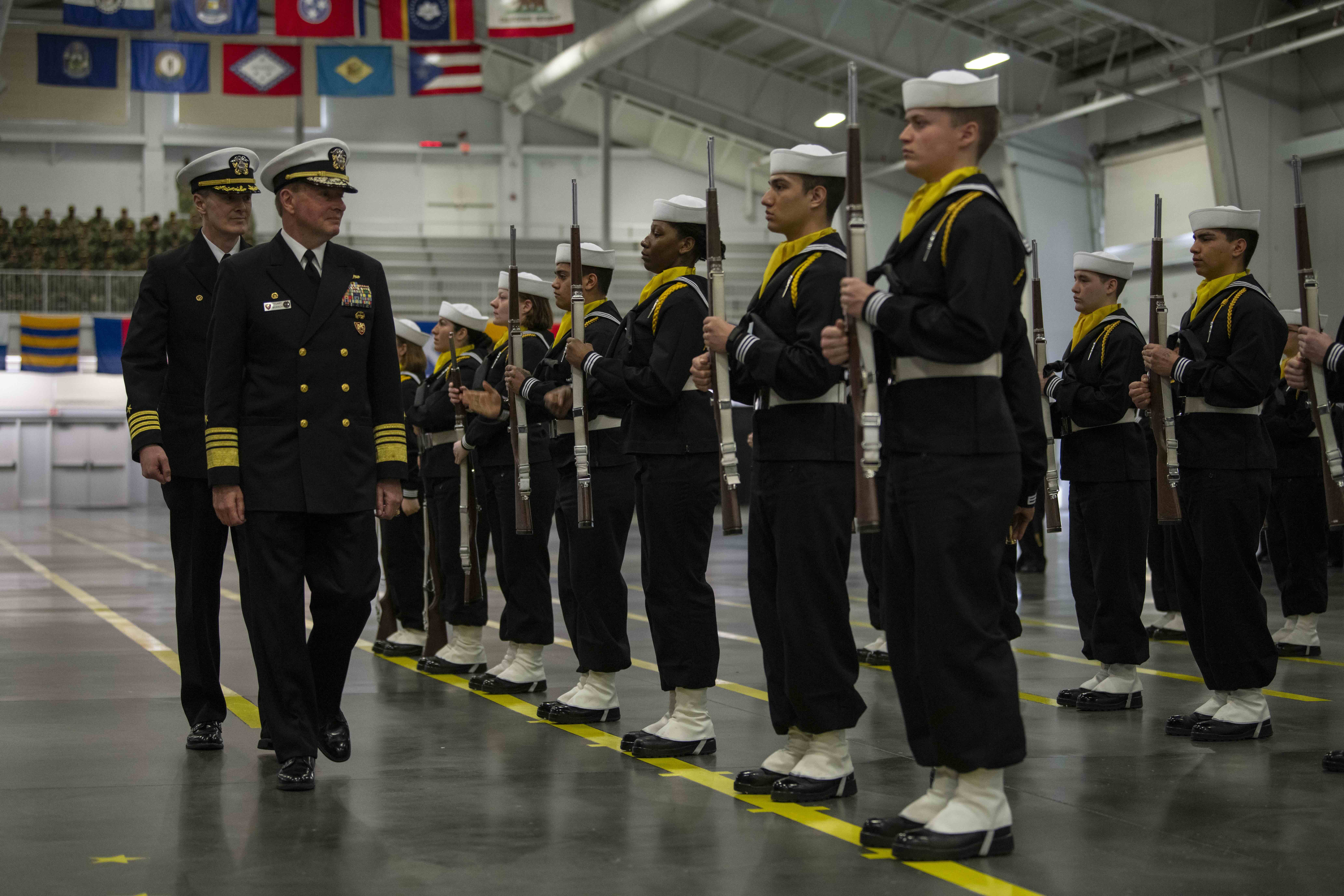
The Navy is set to miss its recruiting goals by 6,700, the sea service’s top personnel officer testified before the House Armed Services personnel subcommittee.
The projected miss in recruiting will mark the second time in a row that the Navy will miss its goals, if its projections come to pass. In Fiscal Year 2023, the sea service missed its goals by 7,464, causing the service to increase its FY 2024 goals in hopes of recapping some of the gap.
Despite missing the projected miss, Chief of Naval Personnel Vice Adm. Richard Cheeseman told the members of the House Armed Services subcommittee for personnel issues that the Navy was trending upward with recruiting. The Navy has 2,500 more recruits compared to the same time last year, Cheeseman said.
“We took what we missed last year and added it to what we need to do this year, partially because we recognize that it’s not just about end strength,” Cheeseman said. “It’s about work requirements in the fleet that we need to maintain so that we can build out of that [hole].”
The Navy has continued to open up a number of paths aimed at widening the pool of applicants, including allowing for people without high school degrees to apply if they meet testing requirements.
For retention, the Navy is on track to meet its goals, according to Cheeseman’s written opening statement. The Navy also met its goals in FY 2023.
The Marine Corps is on track to meet its recruiting and retention goals, Deputy Commandant for Manpower and Reserve Affairs Lt. Gen. James Glynn testified. The Marine Corps is modernizing how it recruits, he told congressional members, as well as continuing to retain at higher levels than the previous years, as part of the shift the service is undergoing as part of its force design.
Like the Navy, the Marine Corps had to tap into its delayed entry program. Currently, the start pool is at 22 percent, below the 50 percent at which it is traditionally maintained, according to Glynn’s written opening statement. The Marines are currently focused on growing that pool.
“In keeping with Marines’ tenet of “exploit success,” we are increasing our recruiting force by several hundred recruiters. We will continue to need robust resourcing – to include advertising and modernization funds – to ensure success,” reads Glynn’s opening statement.





